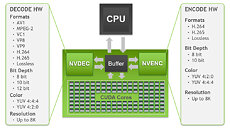
3DMark Gets AMD FidelityFX Super Resolution 2 (FSR 2) Feature Test
UL Benchmarks today released an update to 3DMark that adds a Feature Test for AMD FidelityFX Super Resolution 2 (FSR 2), the company's popular upscaling-based performance enhancement. This was long overdue, as 3DMark has had a Feature Test for DLSS for years now; and as of October 2022, it even got one for Intel XeSS. The new FSR 2 Feature Test uses a scene from the Speed Way DirectX 12 Ultimate benchmark, where it compares fine details of a vehicle and a technic droid between native resolution with TAA and FSR 2, and highlights the performance uplift. To use the feature test, you'll need any GPU that supports DirectX 12 and FSR 2 (that covers AMD, NVIDIA, and Intel Arc). For owners of 3DMark who purchased it before October 12, 2022, they'll need to purchase the Speed Way upgrade to unlock the AMD FSR feature test.






























































